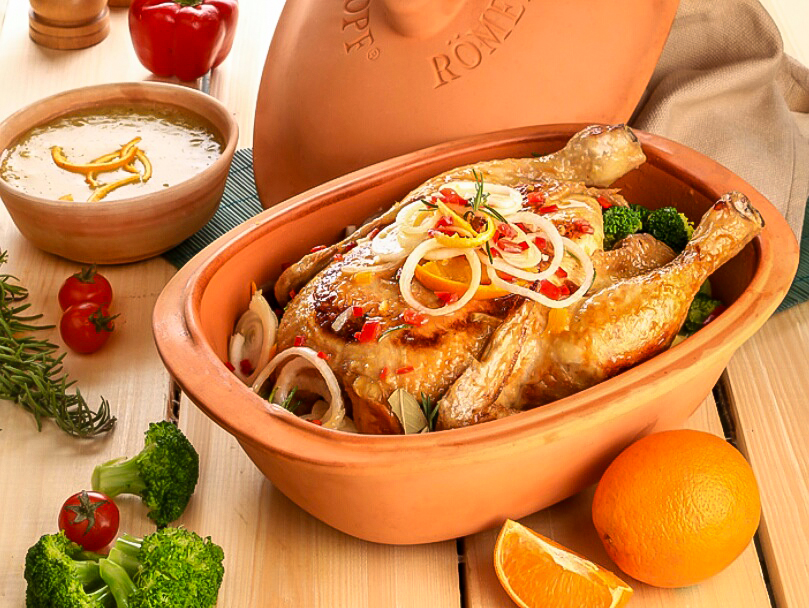Si racconta che l’invenzione della cottura dei volatili nell’argilla sia dovuta all’astuzia di servi poco onesti alle dipendenze di un facoltoso agricoltore. Costui constatava la continua sparizione di polli di sua proprietà ma non riusciva a scoprire il ladro. La colpa veniva attribuita dai servi a volpi e faine. Tale versione non convinceva del tutto il ricco possidente che si presentava all’improvviso nelle case dei servi fiutando l’aria alla ricerca di profumi d’arrosto e cercando addirittura tra i rifiuti penne e piume. Sembra che prossimo a morire il bravuomo chiedesse al prete, seduto al suo capezzale, se in confessione avesse scoperto per caso, non tanto il nome dei ladri, ma almeno lo stratagemma con il quale costoro erano riusciti a farlo fesso per tanto tempo.
Si venne poi a sapere, quando il sistema di cottura si diffuse, che quegli astuti servi, dopo aver rubato il pollo, tiratogli il collo e pulitolo, lo avvolgessero senza spennarlo, con un impasto d’argilla e lo mettessero a cuocere sotto le braci.


I risultati di questo tipo di cottura furono ottimi, sia perché l’argilla, durante la cottura, dava alle carni un sapore corposo ed integro che nessun altro sistema era in grado di ottenere, sia perché nessun odore o profumo poteva filtrare dalla camicia d’argilla e svelarne il contenuto.
Altri invece affermano che siano stati invece gli Etruschi, maestri indiscussi dell’arte fittile, gli inventori di questo tipo di cottura, favoriti dallo studio quotidiano della creta che cocendo irradia calore e che grazie alle sue proprietà di cattivo conduttore tratteneva il calore delle braci e, tesaurizzava senza alcuna dispersione interna, i succhi della carne in cottura. Certo il volatile cotto in argilla non aveva la presentazione imponente dello spiedo portato a braccia da valletti, con accompagnamento di suoni e canti, ancora avvolto dai fumi del focolare, gocciolante di sugo e di umori profumati, ma dal guscio di argilla, rotto dal sapiente colpo di un martello d’argento, il pollo fragrante e saporoso usciva coma da una feconda e calda matrice.
La difficoltà di procurarsi argilla e la continua richiesta dei ghiottoni che volevano gustare i prelibati volatili alla creta, stimolò la fantasia di vasai ed artigiani, alla ricerca di un mezzo più semplice e più a lungo utilizzabile.
Nacque così il doppio guscio di creta, tale da poter racchiudere e cuocere nelle sue valve il volatile spennato. Con pasta di pane sigillate le due metà del guscio, si ricavava il primitivo e rustico sistema di cottura-
Nel 1600 e 1700 i ceramisti trasmisero mediante una tecnica più eccellente ed una decorazione più raffinata, la tematica dell’utensile cuocipollo, ad oggetto che invece di essere adatto alla cottura tra le braci e fumi, meglio si adattava a comparire su mobili e tovaglie preziose.
Questi oggetti divennero nel tempo oggetti privilegiati per il servizio in tavola, servendo quindi solo come contenitori di volatili già cotti in precedenza, nell’umile guscio di argilla.
Eugenio Medagliani – Calderaio Umanista